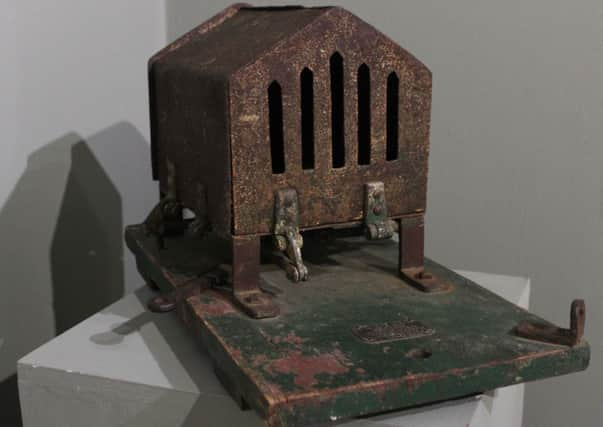Exhibit of the Week: Pigeon release trap - Ryedale Folk Museum


Pigeon release traps were the precursor to clay pigeon traps. They were used to release captive pigeons for the guns. By the 1880s this was a very popular activity but it was banned in the United Kingdom by 1922. This sport is still practised in the USA in many states but the matches have become a closely guarded secret. In today’s sport the terminology is used today: pull and trap etc. The shooting of live pigeons involved the breeding of these birds specifically for the purpose, whereas in the USA feral pigeons were trapped in the municipalities then crated like pheasant poults for transport to the shooting ground.
There was a story doing the rounds a few years ago that a sincere but ignorant contributor to a debate on shooting decried “the senseless slaughter of millions of clay pigeons every year for pure sport”. She had read the statistics and assumed that the clay pigeon like the wood pigeon was an animate being.
Advertisement
Hide AdAdvertisement
Hide AdGuns no larger than 12-bore were used and the preferred “London Best” Purdey, Boss and Holland was the most popular. To take part in a live pigeon shoot, ten traps would be lined out on a closely mown field, each containing a single bird. The pigeon was inserted through the trap door on the end, and then a lever was pulled to release the pigeon through the top of the trap which looks like the roof of a house.
A long string was attached to the release lever. The shooter called “ready” and the trapper called “ready”. Then the shooter called “pull”. A pigeon would have been released from any of the ten traps. Sometimes several traps could be released at the same time by tying a cord to the eyelet of each release mechanism and then pulled at the same time thus releasing several pigeons at once.
Over recent years a new sport has evolved called laser shooting. Deactivated 12-bore shotguns are fitted the state-of-the-art electronic wizardry. The plastic ‘clay pigeons’ are fitted with a reflective strip. The advantage of a laser pigeon shooting over the traditional clay pigeon shooting is that it is perfectly safe and may even be practised indoors.
Today’s object has an interesting local connection. On the wooden base is a metal label which reads: ‘J. READ PLUMBER SANITORY AND HOT WATER ENGINEER WHEELGATE MALTON’. However, it is not known whether J Read was the manufacturer of the trap or the base for the trap or both. If anyone recognises the name J Read from Malton, the museum would be very interested to receive more information. Contact Ryedale Folk Museum on 01751 417367 or pop along to the museum in Hutton-le-Hole, open daily from 10am-4pm.